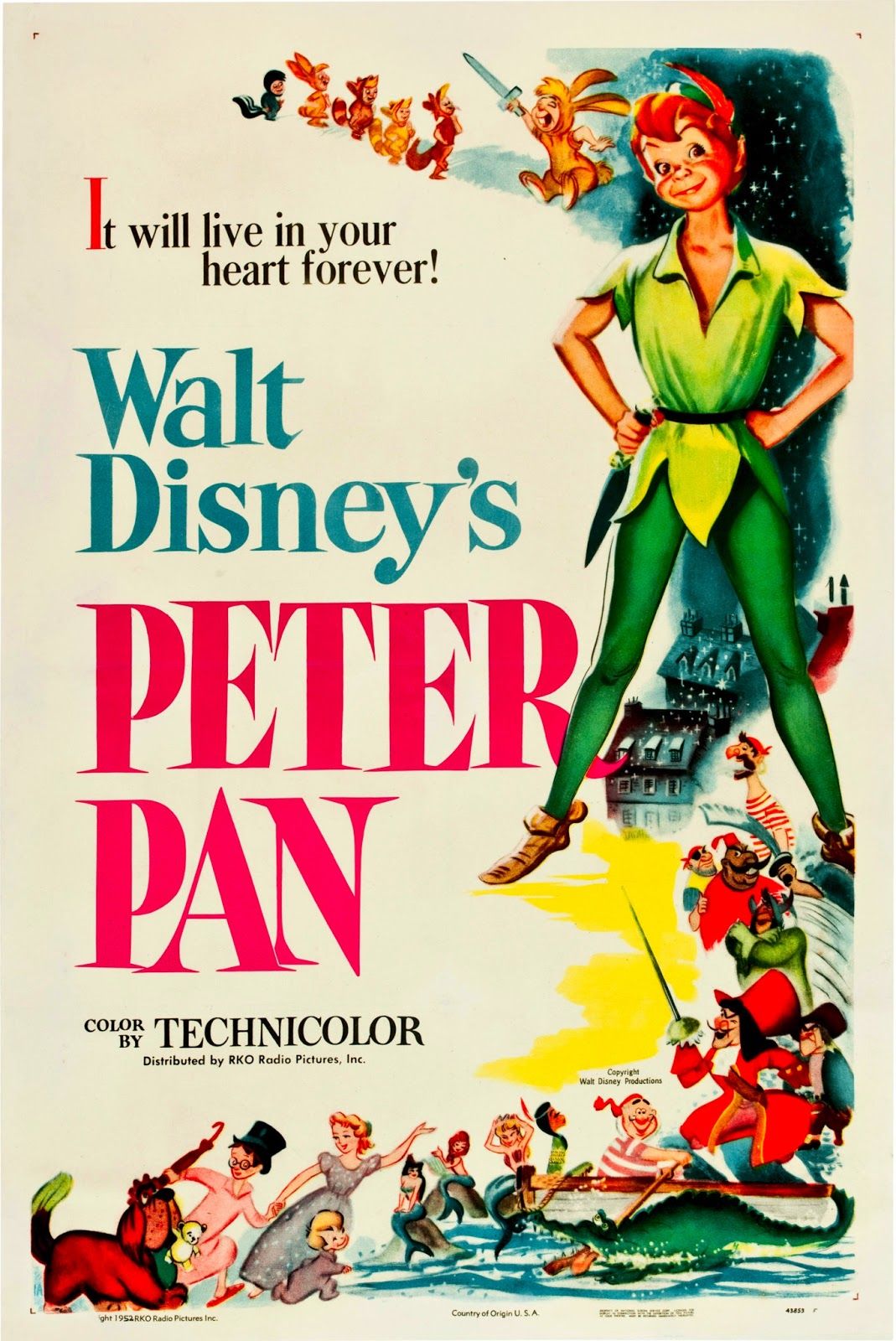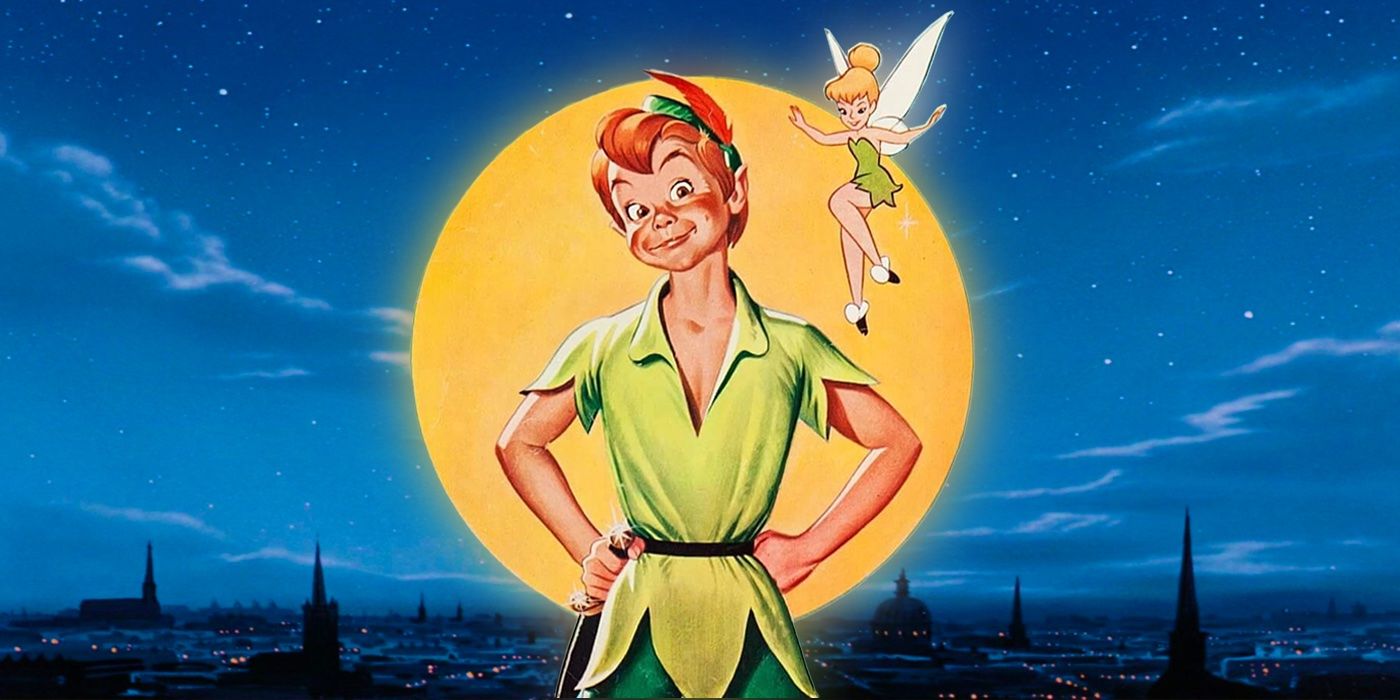The Big Picture
- Disney's Peter Pan may portray a mischievous boy who doesn't grow up, but the true origins of the character lie in author J.M. Barrie's personal life.
- Barrie's obsession with eternal childhood stemmed from the trauma of losing his brother and two infant siblings at a young age.
- Barrie's novel, The Little White Bird, provided the first introduction to Peter Pan and explored the darker aspects of eternal boyhood, including Peter's dangerous behavior and bitterness towards growing up.
For decades, Disney has taken their own wholesome magical spin on fairy tales that tend to have incredibly dark origins. It’s no secret that the original Little Mermaid fairytale by Hans Christian Andersen didn’t exactly end in a happily ever after for our main character; or that Cinderella’s wicked stepsisters received a much harsher punishment for their cruelty in Charles Perrault’s book than missing out on a prince’s proposal; or that the Evil Queen from the adaptations of the Brothers Grimm didn’t simply fall off a cliff. Peter Pan is no different in that respect.
However, there’s a colder sort of darkness that lies beneath the surface of Peter Pan. The boy who doesn’t grow up comes off as whimsical, magical, and more than a little mischievous in Disney’s rendition. His true personality in the book written by J.M. Barrie takes that mischief even further, straying into dangerous territory with Peter Pan’s character when it comes to how he treats others. But the darker parts of Peter Pan’s story lie not in the story itself, but the true inspirations taken from J.M. Barrie's actual life.

Peter Pan
Wendy and her brothers are whisked away to the magical world of Neverland with the hero of their stories, Peter Pan.
- Release Date
- February 5, 1953
- Director
- Clyde Geronimi , Wilfred Jackson , Hamilton Luske
- Cast
- Bobby Driscoll , Kathryn Beaumont , Hans Conried , Bill Thompson , Heather Angel , Paul Collins
- Runtime
- 77
'Peter Pan' Was Inspired by J.M. Barrie's Early Life
Long before Peter Pan made his debut on the stage and on the page, James Matthew Barrie became enchanted (and maybe a little obsessed) with the idea of eternal childhood. In 1867, James lost his older brother David in an ice skating accident the day before he would have turned 14. James was only 6 years old. Such a traumatic loss so early in life was sure to have a strong impact on James, and sure enough, it followed him for the rest of his life.
After David’s untimely death, James thought of his brother often and kept returning to the concept of childhood and explored the idea of holding it sacred. He would later make friends with the Davies boys (explored further, yet not quite accurately, in the 2004 film Finding Neverland), which is a relationship that’s more or less well-known among those who are familiar with Peter Pan’s origins.
One important detail, however, is easily overlooked. J.M. Barrie didn’t just lose his older brother at a young age. He also lost two infant siblings; considering that infant mortality rates were high around this time, experiencing death early on in life was unfortunately not an altogether uncommon experience. In James’ eyes, death seemed to linger all around him, and it affected young lives most of all. Another important detail in the life of J.M. Barrie would be that, while he became obsessed with the concept of eternal boyhood, he himself never had children. Instead, he spent much of his time in the late 1890s and the early 1900s with Jack and George Davies, who were four and five years old at the time they met the author, respectively.

How WWII Nearly Killed the Release of Disney's 'Peter Pan'
The classic eventually did come out in 1953, but it was not an easy journey.An adult spending so much time with young boys has alarmed plenty who end up digging into the history of J.M. Barrie and the inspirations for his characters in Peter Pan’s story. Yes, his friendship with the Davies boys sends alarm bells ringing in our heads, but his interest in Jack and George didn't appear nefarious. His friendship with the young boys may have had more to do with his lost brother and his inability to move on. Later, the Davies siblings would be joined by three more, one of whom, Peter, had quite a familiar name.
Peter Pan's First Appearance Was in J.M. Barrie's Novel 'The Little White Bird'
The first introduction of Peter Pan into the literary world actually didn’t start with the classic novel that so many readers are familiar with. Using his late siblings and the Davies boys for inspiration, J.M. Barrie wrote a novel by the name of The Little White Bird, which told the story of an adult who befriends a young boy and becomes a fatherly figure in his life. The boy in the story is named David; even over 30 years later, James is still thinking of his lost brother.
The Little White Bird explains the lore of how children come to be. According to the narration, children start out as birds in Kensington Gardens. When these birds lose their wings, they become human children and are then doomed to grow up. This first version of Peter Pan comes in the form of an infant who escapes his human life by flying out the window. The story is a magical, and somewhat dark, beginning for a character who would come to embody the positives and the negatives of eternal childhood.
The Story of 'Peter Pan' Is Actually Really Dark
As it turns out, eternal childhood isn’t as perfect as it might sound. When it comes to Peter Pan and his existence in Neverland, never growing up can be dangerous — not just for him, but especially for those around him. Instead of the mischievous but ultimately good-hearted boy we know from Disney’s popular take on the character, J.M. Barrie’s novel portrays Peter Pan as less of a well-meaning jokester and more of a darkly supernatural entity with a strange fixation on control. In addition to focusing on all the good parts of never growing up, Peter Pan holds a special bitterness for any who show signs of growing up, even slightly.
Peter Pan doesn’t just battle pirates; he kills them without hesitation. Considering the fact that the pirates — especially Captain Hook, who seeks revenge for the loss of his hand — regularly attack Peter Pan, fighting back is understandable. However, Peter Pan’s disdain for grown-ups leads him to turn on his own friends too. When the Lost Boys begin to show signs of maturing, he kills them. As Barrie writes in the novel, “The boys on the island vary, of course, in numbers, according as they get killed and so on; and when they seem to be growing up, which is against the rules, Peter thins them out.”
Because Peter Pan is obsessed with being a child forever, he embraces everything childhood entails, one of his favorite hobbies being to go in search of new games. With nothing to structure his life, the boy who never grows up is also the boy who never grows, period; Peter Pan is described in the book as incredibly forgetful. As such, he can’t learn or adapt as well as humans because his memory is slippery and weak.
In most adaptations of Barrie's tale, Peter Pan is often considered a whimsical tale of the boy who never grows up (and who wouldn't want to be a kid forever?), but the story is actually pretty dark — not just for the pirates, the Lost Boys, and very nearly Wendy, but for Peter Pan himself. Being a child forever means that he can never fully realize what he’s missing: life to the fullest. Instead, he petulantly controls those around him, even using death when he feels he needs to, in order to keep his Neverland intact.
While J.M. Barrie clearly often thought of his brother David, and other important children in his life, it’s also clear that he wrestled with the beautiful and the ugly parts of eternal youth and early death. Death continued to follow the characters in Peter Pan and the life of J.M. Barrie, and there’s plenty more to his story (including the sad death of Peter Pan’s namesake, Peter Davies). For now, suffice it to say that Peter Pan’s history is far more complicated, and dark, than can be seen on the surface.
Peter Pan is available to stream on Disney+ in the U.S.

